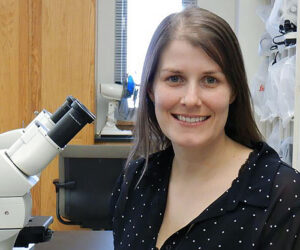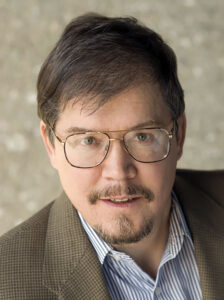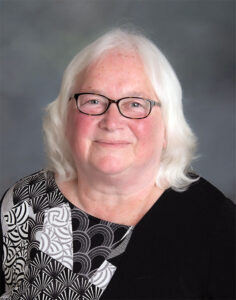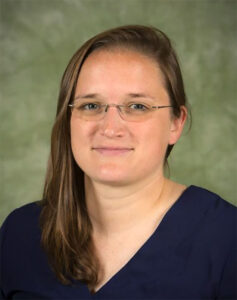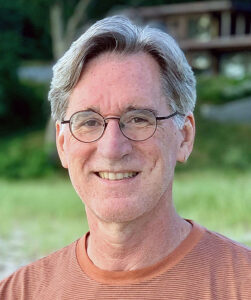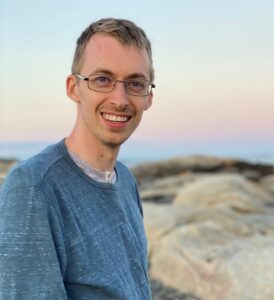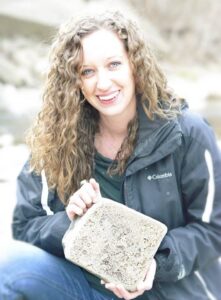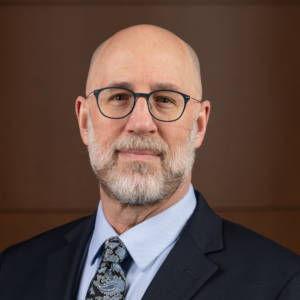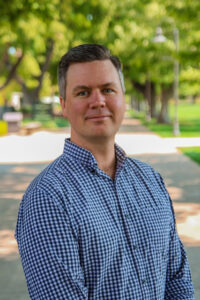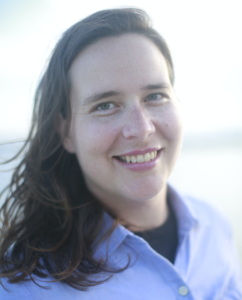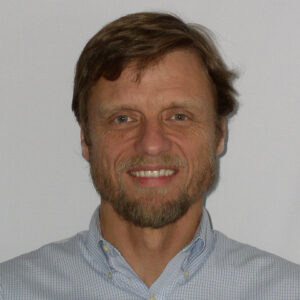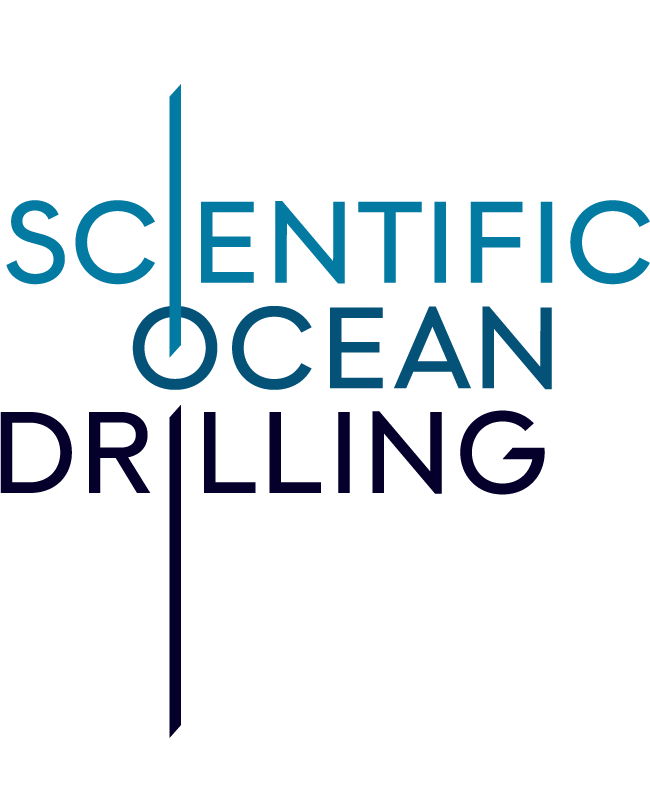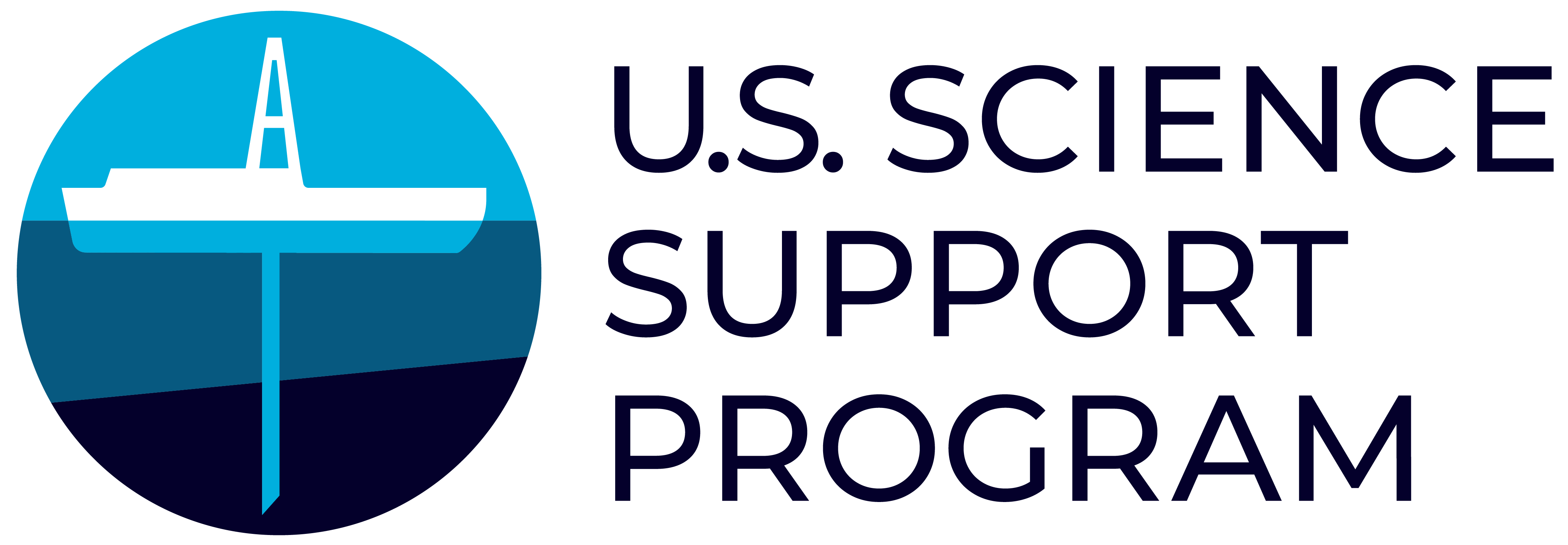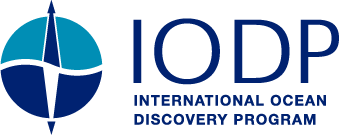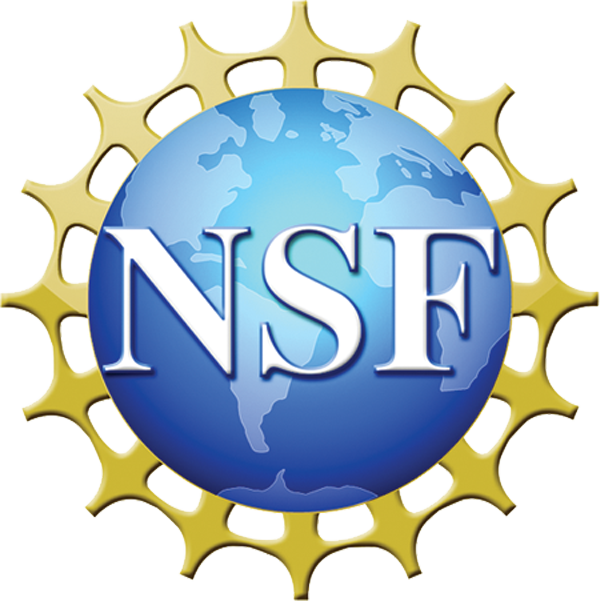For over 20 years, the Ocean Discovery Lecture Series (formerly the Distinguished Lecturer Series) has brought the remarkable scientific results and discoveries of the International Ocean Discovery Program and its predecessor programs to academic research institutions, museums, and aquaria. Since 1991, over 1,000 presentations to diverse audiences have been made through the Lecture Series.
The Ocean Discovery Lecturers for the 2024-2025 academic year will be:
LIFE IN THE MARINE CRUSTAL BIOSPHERE
The oceanic crust, located often below a thick layer of sediment, is one of Earth’s most remote habitats. The permeable basement rock hosts a dynamic aquifer, where water isolated from the sea above can circulate. Microorganisms in this crustal biosphere are deprived of sunlight and the planet’s typical food web. Instead, the organisms depend on the minerals and nutrients of the subseafloor aquifer. There is much to learn from these organisms, including their contributions to global biogeochemical cycles and their strategies for surviving in their nutrient and energy-limited habitat. For 27 years, the international ocean drilling community has studied this environment—and the microorganisms living within—using subseafloor borehole observatories. Because the lifestyles of these microorganisms are different from those at the surface, cultivation has been mostly unsuccessful. Thus, much of what we know about these elusive organisms results from genomic analyses. This presentation is an introduction to the borehole observatories of the Juan de Fuca Ridge Flank and our genomic understanding of the unique but abundant microorganisms of the marine crust.
Stephanie is an associate professor of the biology department at Hartwick College in Oneonta, NY. Her research focuses on subsurface microbiology. Stephanie earned a BS in biochemistry from Hartwick College and a PhD in geochemistry from the Colorado School of Mines, studying the microbiology of Antarctic sediments. As an NSF-funded post-doc, Stephanie worked at the Bigelow Laboratory for Ocean Science, investigating genomes of the Juan de Fuca Ridge crustal aquifer. In total, she has spent a total of 166 days at sea, participating in IODP expeditions 318, 365, and other expeditions to the IODP observatories (Juan de Fuca Ridge and North Pond). Stephanie is thrilled to be back at her alma mater, and takes great pride in exposing undergraduate students to collaborative research projects.
THE CHURNING INTERIOR OF PLANET EARTH—
A VIEW OF THE PACIFIC OVER THE CENOZOIC
For the last 50 years, plate tectonics has proven to be an extraordinarily successful framework for understanding processes near the surface, from earthquakes and volcanoes to sea floor spreading and long-term sea level change. Despite its kinematic success, uncovering the underlying dynamics and linkage of plate tectonics to the deeper mantle has proven to be more elusive. This is exemplified by our poor understanding of the time-dependence of plate tectonics, like the formation of new plate boundaries, changes in plate direction, and a supercontinent cycle. This lecture will detail key research breakthroughs that span different disciplines from ocean drilling to global seismology, computational science, and earth physics to elucidate the forces driving plate tectonics.
Ocean drilling has provided some of the key constraints, including within the Pacific hemisphere, showing a drastic change in plate tectonics and mantle convection during the Eocene. This is exemplified by the prominent bend in the Hawaiian–Emperor seamount chain which apparently indicates that the Pacific Plate abruptly changed its direction from the north to the west. The Izu-Bonin-Mariana (IBM) subduction zone, south of Japan, and the Tonga-Kermadec, north of New Zealand, formed at roughly the same time and the change in Pacific Plate motion has been linked with the initiation of these vast subduction systems pulling the Pacific to the west. I shed new light on this topic by describing results from IODP Expeditions 351 and 352 to IBM and 371 to Zealandia within the context of a new generation of global models that realistically treat the mechanics of subduction and plate tectonics. Both an abrupt Pacific Plate motion change and a change in mantle plume dynamics have been proposed to account for the Hawaiian–Emperor Bend, but by integrating the historical constraints into plate reconstructions and high-resolution global dynamic models we are better able to understand the mechanics of plate tectonics and its coupling to the deeper interior.
Michael Gurnis is the John E. and Hazel S. Smits Professor of Geophysics at the California Institute of Technology since 1994. Joining the scientific ocean drilling community late in his career, he has sailed on three IODP expeditions to the Indian and Pacific Oceans since 2014, after many years working to advance computational studies of solid earth processes. Mike wears different hats, including as Director of the Seismological Laboratory at Caltech.
EMBRACE DIAGENESIS: THE ROLE OF METHANE IN CARBON AND SULFUR SEQUESTRATION IN MARINE SEDIMENTS
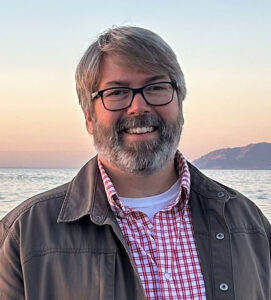 In marine sediments, authigenic minerals, formed after deposition of the sediments, serve as geological archives of paleo-pore water conditions that reflect changing environmental conditions through time. Globally, the presence of organic carbon and seawater sulfate in near-seafloor marine sediments drives organoclastic sulfate reduction (OSR), increasing alkalinity and sulfide species in the porewaters and resulting in pyrite and authigenic carbonate formation in marine sediments. These precipitates are a common occurrence in modern organic carbon bearing marine sediments and are observed in outcrops of ancient black shale sequences on land. Below the sulfate reduction zone, organic carbon drives methanogenesis in marine sediments and at the boundary of sulfate and methane depletion, known as the sulfate-methane transition zone (SMTZ), additional alkalinity and sulfide production is driven by the anaerobic oxidation of methane (AOM). This can result in additional authigenic carbonate and pyrite formation beyond that produced by OSR. The depth of the SMTZ is controlled by the availability of organic carbon, sulfate, and methane and is largely driven by changes in sedimentation rate and/or changes in the flux of methane. Through time, the result is a moving geochemical front (the SMTZ) that leaves a wake of authigenic mineralization in its path, overprinting, cementing, or replacing the originally deposited primary minerals, rock fragments, and biogenic particles. Methane seeps represent one end member environment where the SMTZ exists at or near the seafloor, whereas in methane-limited systems, OSR dominates and the SMTZ exists at greater depths.
In marine sediments, authigenic minerals, formed after deposition of the sediments, serve as geological archives of paleo-pore water conditions that reflect changing environmental conditions through time. Globally, the presence of organic carbon and seawater sulfate in near-seafloor marine sediments drives organoclastic sulfate reduction (OSR), increasing alkalinity and sulfide species in the porewaters and resulting in pyrite and authigenic carbonate formation in marine sediments. These precipitates are a common occurrence in modern organic carbon bearing marine sediments and are observed in outcrops of ancient black shale sequences on land. Below the sulfate reduction zone, organic carbon drives methanogenesis in marine sediments and at the boundary of sulfate and methane depletion, known as the sulfate-methane transition zone (SMTZ), additional alkalinity and sulfide production is driven by the anaerobic oxidation of methane (AOM). This can result in additional authigenic carbonate and pyrite formation beyond that produced by OSR. The depth of the SMTZ is controlled by the availability of organic carbon, sulfate, and methane and is largely driven by changes in sedimentation rate and/or changes in the flux of methane. Through time, the result is a moving geochemical front (the SMTZ) that leaves a wake of authigenic mineralization in its path, overprinting, cementing, or replacing the originally deposited primary minerals, rock fragments, and biogenic particles. Methane seeps represent one end member environment where the SMTZ exists at or near the seafloor, whereas in methane-limited systems, OSR dominates and the SMTZ exists at greater depths.
Carbonate and sulfide authigenic minerals are often a nuisance to paleoceanographers and sedimentologists who seek to reconstruct original sea surface, water column, and sea floor conditions through time, but they are also the manifestation of paleo-pore fluid reactions through time, which can help us all reconstruct carbon and sulfur transformations, their sequestration in marine sediments, and the broader mechanisms that drive shallow subseafloor diagenesis through time.
In this talk, I will review early diagenetic processes in marine sediments and use scientific ocean drilling data from ODP Leg 204 (Cascadia), NGHP-01 (India), IODP Exp. 386 (Japan), and UT-GOM2-1 and -2 (Gulf of Mexico) to reveal a range of processes that can be examined through the detailed integration of pore fluid geochemistry, sedimentology, and physical properties data. The results emphasize the important role of methane in marine sediments, both as a driver for geochemical processes and a respondent to changing environmental conditions.
Dr. Joel E. Johnson, Professor and Chair in the Department of Earth Sciences at the University of New Hampshire, received his B.S. from the University of Minnesota, Duluth, his M.S. from the University of Illinois, and his Ph.D. from Oregon State University. Joel was a post-doctoral fellow at the Monterey Bay Aquarium Research Institute and joined the University of New Hampshire as an Assistant Professor in the Department of Earth Sciences in 2005. His research is focused broadly on the geologic interpretation of recent marine sedimentary sequences in order to reconstruct the geologic, geochemical (diagenetic), tectonic, and oceanographic processes that occur and interact during the evolution of continental margins. In most of his recent research projects, these reconstructions have been used to understand marine methane cycling and the evolution of methane hydrate systems through time. Joel has experience as a shipboard sedimentologist on four scientific ocean drilling expeditions and has coring, seafloor mapping, and seismic data acquisition experience on 20 research cruises. He has also twice taught a short course for IODP on shipboard sedimentology. Joel routinely works with international science teams from data collection to follow-up laboratory measurements and integrated synthesis. His publications range in spatial scale from sediment grain studies to plate boundary tectonics and timescales of modern to tens of millions of years. At UNH Joel teaches undergraduate and graduate courses in geological oceanography, sedimentology, structural geology, and geotectonics.
IODP DRILLING YIELDS EXCITING INSIGHTS INTO THE WORKINGS OF A YOUNG, OBLIQUELY RIFTED, ACTIVE CONTINENTAL MARGIN
The Gulf of California (GOC) marks a young transtensional plate boundary in western Mexico between the North American and Pacific plates. Obliquely rifted continental margins such as this are rare today, but thought to have been more common in the past—for example, during the Mesozoic development of the Atlantic Ocean. Study of the older margins is hindered by subsidence and thick sediment cover, so less sedimented GOC basins are more accessible analogues. Deep sea exploration through scientific ocean drilling in the GOC has focused in the centrally located Guaymas Basin, first in 1978 on the Glomar Challenger during Deep Sea Drilling Project (DSDP) Leg 64 and later in 2019 on the JOIDES Resolution during International Ocean Discovery Program (IODP) Expedition 385. In this basin, seafloor spreading is manifested in surficial graben and subsurface sills developed in the sediment fill. Leg 64 was renowned for recovering the first ~150 m of hydraulically-piston-cored (HPC) sediment at Site 480 on the Sonoran slope. Forty years later, Expedition 385 scientists marveled at the same fine mm-scale lamination preserved in HPC-cored biosiliceous sediment fill of the basin. Sites drilled during DSDP Leg 64 on the northern continental slope as well as across the northern and southern grabens were augmented during Expedition 385 by a series of eight sites (~4 km of recovered core). They link north to south and expand east to west—far from the spreading center—providing a broader picture of basin sedimentation and off-axis magmatism. This deeper and more extensive view provides new insights into the nature and distribution of sedimentary facies and volcanism in the basin, including sill-sediment contact zones and gravity-mass flow deposits. Such event beds warrant further study, as they are potentially linked to seismic and storm processes acting across the narrow confines of the Gulf of California. I will present a broad overview of the basin and its workings through the lens of shipboard discoveries and post-cruise research, including that of my students and colleagues. These studies might suggest that Guaymas is the “Goldilocks” Basin of the Gulf of California: you decide if it is just right or too much of a good thing!
Kathie Marsaglia is a Professor of Geology in the Department of Geological Sciences, California State University Northridge (CSUN), her academic home since 2000. She is a sedimentologist with expertise in sandstone petrology, sedimentation and tectonics, as well as marine geology. Between graduate degrees and before coming to CSUN, she worked in the petroleum industry in exploration and as a senior reservoir geologist. Her dissertation on magmatic-arc sand provenance was based on samples collected from ~80 DSDP sites stored in the Scripps and Lamont-Doherty core repositories. Her participation in Ocean Drilling Program (ODP) Leg 126 to the Izu-Bonin Arc near the end of her PhD was transformative. Over her career she has spent about two years at sea on 14 scientific cruises, including 6 ODP and 4 IODP, collecting, describing, and interpreting marine sediments and sedimentary rocks in the circum-Pacific and Northern Atlantic Oceans and the western Mediterranean Sea. These cruises covered a wide range of tectonic and oceanographic settings: intraoceanic arc, reararc, backarc, triple junction, passive continental margin, oceanic plateau, and obliquely rifted margin (Exp 385). She transferred expertise gained on these cruises into four IODP Technical Notes on core description and smear slide analysis (https://iodp.tamu.edu/publications/TN.html). She is a Fellow of the Geological Society of America, was an AAPG Distinguished Lecturer, and received the Grover E. Murray Distinguished Educator Award from AAPG and Outstanding Faculty Award from CSUN. Service to ODP and IODP includes various proposal evaluation panels, membership on the JOIDES Resolution Readiness Assessment Team and U.S. Advisory Committee (USAC), and most recently serving as Science Co-Chair of the IODP Science Evaluation Panel (2022–2024).
CATCHMENT SENSITIVITIES OF THE WEST AND EAST ANTARCTIC ICE SHEETS TO ORBITAL FORCING DURING THE MID- TO LATE PLIOCENE
The Antarctic ice sheet appears as a large, massive homogenous blob on most maps, yet some computer models predict there is considerable variability with respect to how the ice sheet may change under various warming scenarios due to different Earth systems processes. Sediment records recovered from the ice margin during ocean drilling expeditions associated with the International Ocean Discovery Program (IODP) and its predecessor programs can help provide some insight on the causes of Antarctic ice sheet variability. Such insight is fundamental towards understanding some of the sensitivities of how the ice sheet might respond to future climate change.
Geochemical records from the deep, which reflect past changes in ice volume and global temperature, demonstrate clear oscillations in ice volume that were paced by astronomical variations. Such astronomical variations involve eccentricity (the shape of Earth’s orbit, ~400 and 100 thousand year cycles, kyr), obliquity (tilt of Earth’s axis, ~41 kyr), and precession (wobble of Earth’s axis, ~20 kyr) cycles. While geological records recovered from the Antarctic margin also demonstrate this, the exact mechanisms for how orbital forcing impacts ice sheet mass balance, including regional sensitivities of ice sheets to marine and terrestrial climate feedbacks, remain elusive. I will present two high-resolution mid-Pliocene to Early Pleistocene (~3.3 to 2.3 Ma) records of iceberg-rafted debris recovered from the West Antarctic Ice Sheet (WAIS) Ross Sea margin and the East Antarctic Ice Sheet (EAIS) Wilkes Land margin collected during IODP Expeditions 374 and 318, respectively. These results suggest that different sectors of marine-based margins of Antarctica’s ice sheets have different sensitivities to various climate and oceanic feedbacks resulting from astronomical variations. Our findings ground-truth computer modelling experiments that highlight large spatial variability in the response of Antarctica’s ice sheet to future warming, and that sensitivities of the ice sheet to atmospheric and marine forcing differ in each catchment.
Dr. Molly Patterson is an Associate Professor in the Department of Earth Sciences at Binghamton University in New York. Much of her career has been driven by a keen interest in better understanding the interactions between the Southern Ocean and the Antarctic Ice Sheet and its downstream influence on the global ocean. This interest began as an undergraduate researcher, when she examined diatoms from Holocene Southern Ocean records while undertaking a B.A. in Geology at Colgate University. Her M.S. thesis at Southern Illinois University of Carbondale focused on examination of foraminifera assemblages from the Antarctic DRILLing Project (ANDRILL) Southern McMurdo Sound Project (AND-2A). Her M.S. experience introduced her to working with large international science teams. She then conducted a Ph.D. at Victoria University of Wellington with researchers in the Antarctic Research Centre in New Zealand. As a Ph.D. student she was first exposed to the ocean drilling program as a part of her thesis work, which involved both legacy core material recovered adjacent to New Zealand, as well as newly recovered material from the Wilkes Land Margin of Antarctica associated with IODP Expedition 318. As a post-doctoral researcher at the University of Massachusetts Amherst, she developed a strong interest in better understanding the connections between Northern Hemisphere and Southern Hemisphere climate systems working with the Lake El’gygytgyn group there. Molly has participated as a shipboard scientist on IODP Exp. 374 to the Ross Sea. She has also served as a panelist on the IODP Science Evaluation Panel (SEP).
MEGATHRUST… OR BUST? THE SAGA OF THE IODP NanTroSEIZE SUBDUCTION ZONE ULTRADEEP DRILLING PROJECT
IODP was launched two decades ago with the grand challenge of drilling, sampling, and instrumenting a subduction zone plate boundary fault – a “megathrust” – at a depth where earthquakes occur. Subduction zones produce all of the truly giant earthquakes on our planet, accompanied too often by devastating tsunamis. The launch of the riser drillship Chikyu gave IODP new ultra-deep drilling capability for the first time. The Nankai Trough Seismogenic Zone Experiment (NanTroSEIZE) was conceived to use this new capacity to its fullest by drilling a comprehensive transect spanning the leading edge of that SW Japan subduction zone, known to host repeated magnitude 8+ earthquakes and tsunamis, sampling and instrumenting the incoming plate, the shallow frontal fault zones, and ultimately the main megathrust fault at up to five thousand meters below the seafloor. Over 13 years and 13 expeditions, 15 sites were drilled, three of which now have long-term borehole monitoring instruments connected to offshore fiber optic cables, making for the first truly real-time subseafloor observatories in ocean drilling history. The main borehole is the deepest ever in scientific ocean drilling at more than 3000 meters below the seafloor. The results of the NanTroSEIZE effort have revolutionized our understanding of how these subduction faults work, how stress builds up in the earth and is released, and how continental margin accretionary wedges grow, yielding many surprises along the way. And yet the greatest objective remains elusive: Expedition 358, the last of the NanTroSEIZE expeditions in IODP, was not able to overcome technical challenges and advance the borehole the final 2000 meters to the main fault zone. This presentation will highlight the groundbreaking science achieved as well as the setbacks and frustrations of high-risk scientific exploration, ending with a look at the unprecedented insight we are still getting today from this “wired” plate boundary.
Harold Tobin is Professor of Earth and Space Sciences at the University of Washington, where he holds the Paros Chair in Seismology and Geohazards. Between 1992 and 2019 he sailed as a shipboard scientist on ten ODP and IODP drilling expeditions, serving as co-Chief Scientist four times while leading the multi-expedition Nankai Trough Seismogenic Zone Experiment project for over a decade. Tobin has spent over 500 days at sea. His career research focus has been on the structure, mechanics, and physical properties of plate boundary faults, including study of the Cascadia, Costa Rica, Barbados, and Nankai subduction zones, as well as the San Andreas fault of California and the Alpine fault of New Zealand. He holds a bachelor’s degree from Yale University and a doctorate from University of California Santa Cruz, followed by postdoctoral research at Stanford University. Prior to moving to the University of Washington in 2018, he held faculty positions at the University of Wisconsin and at New Mexico Tech. Tobin is currently the Director of the Pacific Northwest Seismic Network and the Washington State Seismologist.
The Ocean Discovery Lecturers for the 2023-2024 academic year are:
ANOMALOUS VOLCANIC CARBON DIOXIDE RELEASE AND CRETACEOUS OCEAN ANOXIC EVENT 2
A distinct, mid-Cretaceous black shale layer, discovered in large swaths of the global ocean during pioneering ocean drilling in the 1970s, represents the effects of severe ocean anoxia approximately 94 million years ago during an event called Oceanic Anoxic Event 2 (OAE2). This intriguing finding that past ocean basins were abruptly deprived of dissolved oxygen has spurred decades of research focused on both the triggers and paleoceanographic responses for this and other Cretaceous OAEs. This lecture will detail key research breakthroughs in the scientific understanding of Cretaceous OAEs over the nearly 50 years since their initial discovery, incorporating the most recent findings from scientific drilling in the Indian Ocean by the JOIDES Resolution research vessel. Geochemical data and sedimentological observations will be presented from cores drilled in the Mentelle Basin (offshore Australia) during International Ocean Discovery Program (IODP) Expedition 369. Observations and data from these cores provide a new understanding of the role and intensity of ocean acidification during OAE2 caused by abrupt CO2 emission from the eruptions of large igneous provinces (LIPs). The precise source of the CO2 remains unclear given uncertainties regarding the ages and eruptive histories of many submarine LIPs. Yet expeditions to recover cores from submarine LIPs, including the most recent Cretaceous IODP expedition which cored the expansive Agulhas Plateau offshore South Africa, provide rare opportunities to help determine which specific LIP so drastically influenced Earth’s climate and oceans in the mid-Cretaceous.
Marine drilling records of the Cretaceous OAEs provide some of the best geologic records of the effects of rapid carbon emission on the ocean-atmosphere system. These records highlight the apparent sensitivity of Cretaceous oceans to the volcanogenic emissions of volatiles like CO2 and SO2. However, the natural feedback mechanisms that eventually sequestered carbon to restabilize oceanographic conditions by the end of OAE2 may provide prescient models for modern, geologically-based mitigation strategies to address rising anthropogenic CO2 levels.
Matt Jones is a research geologist at the U.S. Geological Survey (USGS) in the Geology, Energy & Minerals Science Center in Reston, Virginia. Much of his research has focused on Cretaceous stratigraphy to better understand oceanic anoxic events, the carbon cycle, and greenhouse climate during this time. He has sailed on two Cretaceous-themed International Ocean Discovery Program (IODP) expeditions, first in 2017 (Expedition 369 – Australia Cretaceous Climate and Tectonics) and in 2022 (Expedition 392 – Agulhas Plateau Cretaceous Climate). Prior to joining the USGS, he earned a PhD in Earth and Planetary Sciences from Northwestern University and was a postdoctoral fellow at the University of Michigan and Smithsonian National Museum of Natural History. Most recently at the USGS, he contributes to research of geologic carbon sequestration and energy storage in the sedimentary basins of the United States.
LECTURE SCHEDULE
- November 10, 2023 – Texas A&M University, College Station, TX
- November 29, 2023 – University of Maine, Orono, ME
- February 29, 2024 – Colorado State University, Fort Collins, CO
- March 27, 2024 – Kansas State University, Manhattan, KS
- March 29, 2024 – University of Iowa, Iowa City, IA
- March 22, 2024 – Appalachian State University, Boone, NC
SHE SIEVES SEA SHELLS FROM THE SEA FLOOR: PLANKTON FOSSILS REVEAL OCEANIC EVOLUTION AND DISPERSAL PROCESSES
Planktic foraminifera are single-celled marine protists that create shells (tests) made from calcium carbonate. Their fossil record in the marine realm is superb, and allows for an unprecedented view into the movement of planktic organisms around the world ocean and insight into their evolutionary processes. As such, evolution and extinction events of fossil plankton are used for first-order age control in sedimentary sequences (biostratigraphy). Planktic foraminifera respond to environmental factors, but temperature is the main factor that controls their distribution, dispersal, and diversity through time. As such, this plankton group is incredibly valuable to reconstruct ancient surface ocean currents.
The last ~23 million years of Earth’s history, the Neogene and Quaternary periods, features a large increase in planktic foraminiferal diversity, and is the time in which surface ocean circulation came into its modern configuration. This time also includes warming events that are analogous to anthropogenic warming modeled for the coming decades, as well as times of global cooling and ice growth. The Neogene and Quaternary periods are therefore ideal periods of time to study the factors that influence plankton evolution and dispersal across the oceans.
Using data from seventeen previous scientific ocean drilling expeditions, combined with new data developed for Ocean Drilling Program Leg 198 in the northwest Pacific, this study investigates the global movement of planktic foraminiferal through the last 23 million years of Earth’s history. Using global occurrences of the planktic foraminiferal genus Globoconella, the processes that allow for bi-polar distributions (occurrences in the poles but not in the tropics) of species will be investigated, as will how species have dispersed from one ocean basin to another. Such dispersal processes also have implications for use of foraminifera in biostratigraphy. The study finds large diachroneity in species’ first and last occurrences due to oceanic and climatic factors. Such diachroneity should be viewed as a strength, rather than a weakness, of the planktic foraminiferal fossil record.
Dr. Adriane Lam received her B.S. from James Madison University, her M.S. from Ohio University, and her Ph.D. from University of Massachusetts Amherst. Adriane joined Binghamton University as a Postdoctoral Fellow in 2020, and began her career there as an Assistant Professor in the Geology Department in 2023. Adriane works with fossil marine plankton and invertebrates to investigate evolutionary processes of these organisms across major climate perturbations. She also conducts paleoceanographic research, where she reconstructs surface ocean currents across ancient warming events that are analogous to the warming Earth is experiencing today and in the coming decades. Adriane is co-creator and co-President of Time Scavengers, a non-profit organization that provides accessible information about climate change and evolutionary theory to aspects of the general public, and helps support the next generation of Earth stewards. Adriane has participated in International Ocean Discovery Program Expeditions 371 (southwest Pacific Ocean) and 393 (southwest Atlantic Ocean).
LECTURE SCHEDULE
- October 6, 2023 – Hofstra University, Hempstead, NY
- November 2, 2023 – Yale University, New Haven, CT
- February 15, 2024 – Virginia Living Museum, Newport News, VA
- February 27, 2024 – University of West Georgia, Carrollton, GA
- February 29 – March 1, 2024 – University of South Alabama, Mobile, AL
- March 28, 2024 – Syracuse University, Syracuse, NY
- April 8, 2024 – Iowa State University, Ames, IA
- April 11 – 13, 2024 – University of Nebraska Lincoln, Lincoln, NE
INSIDE IODP: TALES OF TECTONICS AT THE NANKAI TROUGH AND THE CULTURE OF SCIENTIFIC OCEAN DRILLING
Contributions from the IODP span a remarkable range of disciplines, from paleoclimate to petrology and from microbiology to mass wasting, to name just a few. Successes of the program have inspired legions of international scientists, making IODP one of the most successful engines of knowledge growth in the last half century. My presentation aims to highlight a little bit of science and quite a bit about the conditions that enabled it. It will be a glimpse under the hood. The science is a vignette of subduction zone behavior elucidated by drilling at the Nankai trough. The work highlights the exceptionally high-quality core that is a hallmark of IODP and that it was essential to revealing changing coupling conditions across a boundary known to produce M8+ earthquakes.
After the science vignette I will zoom out and share my observations of how IODP works both in science terms and more broadly. Themes I’ll discuss include how the science agenda is set, and how early career scientists are recruited and supported. There are many ways for trainees to become part of the community. Finally, I will explore how IODP is influencing the public at large. This part of my presentation will focus on three ways that IODP touches much more than the scientists and scholars that one might expect. First, IODP may well be in a K12 classroom near you, and I’ll describe how that might be the case and how you might participate. Second, IODP has hit the terrestrial highway to great effect. The In Search of Earth’s Secret’s project has brought scientific ocean drilling research to a swath of the US in recent years. Third, IODP has been the breeding ground for what I view as derivative projects that have proven to be very powerful. IODP functions as a STEM-research and learning ecosystem that is truly extraordinary and indeed indispensable for a resilient future.
Jon Lewis is a professor of geology and environment at Indiana University of Pennsylvania where he has been teaching in his undergraduate-only program since 2004. His scholarship focusses on tectonic geology and geoscience community innovations. Most of his recent tectonics work has been in SW Japan, Costa Rica, and Taiwan. In Japan his work has focused on young structures forming in response to plate convergence at the Nankai Trough subduction zone. In Costa Rica he has worked to understand the upper plate structures that are accommodating collision with the Cocos Ridge. In Taiwan he has addressed ongoing arc-continent collision. In the geoscience community realm, since 2016 Jon has co-led the STEM Student Experiences Aboard Ships (STEMSEAS) project, which assembles diverse cohorts of undergraduate students and takes them to sea for transformative experiences on vessels of the U.S. academic fleet for 5-10 days. He is also a co-founding member of the Coastal and Ocean STEM Equity Alliance (COSEA), which is working to support access and belonging for people historically excluded from and/or are not participating in geosciences.
LECTURE SCHEDULE
- October 5, 2023 – University of Delaware, Newark, DE
- October 6, 2023 – Binghamton University, Binghamton, NY
- November 30 – Georgia Southern University, Statesboro, GA
- January 29, – University of Nevada Reno, Reno, NV
- March 11, 2023 – San Jose State University, San Jose, CA
- March 13, 2023 – San Diego State University, San Diego, CA
CARBON AND SILICA CYCLE COUPLING DURING CENOZOIC WARM PERIODS
Our current understanding of the long-term carbon cycle holds that Earth’s climate is stabilized by a negative feedback involving the consumption of atmospheric carbon dioxide by the chemical weathering of silicate minerals. This theory posits that silicate weathering responds to climate: when atmospheric pCO2 and surface temperatures rise, chemical weathering accelerates, consuming more atmospheric CO2 and cooling global climate; when pCO2 falls, weathering fluxes decrease, permitting buildup of CO2 and consequent warming. The role that this feedback plays in climate and the carbon cycle has received significant attention, but the implications for the marine silica cycle are relatively less well-studied. Since the release of dissolved silica from chemical weathering reactions is the main input of silica into the oceans, variations in silicate weathering rate in response to trends and perturbations in climate and the carbon cycle must lead to a dynamic marine silica cycle. This inexorably couples the silica cycle to the carbon cycle and global climate. Due to the relatively short residence time of dissolved silica in the oceans, silica burial rates must respond to climate as well. 60 years of deep-sea scientific drilling present the opportunity to probe this dynamic carbon-silica cycle coupling through records of silica burial rates and novel proxies constraining various aspects of the marine silica cycle. In particular, I will present results from recent IODP drilling expeditions to explore the marine silica cycle response to two contrasting Cenozoic warming events: the Paleocene-Eocene Thermal Maximum (PETM, 56 million years ago) and the Middle Eocene Climatic Optimum (MECO, 40 million years ago).
Don Penman holds a bachelors degree in Geology from Carleton College, and a PhD from UC Santa Cruz where he studied the carbonate chemistry response to the Paleocene-Eocene Thermal Maximum with advisor Jim Zachos. He subsequently became a postdoctoral fellow at Yale University and in 2020 joined the Department of Geosciences at Utah State University as an Assistant Professor. Don has sailed on three IODP expeditions as shipboard scientist (342, 371, and 392). His research uses the deep-sea sedimentary record to probe interactions between climate and geochemical cycling during ancient Earth System perturbations.
LECTURE SCHEDULE
- January 26-27, 2024 – Virginia Tech, Blacksburg, VA
- February 14, 2024 – University of Montana Western, Dillon, MT
- February 23, 2024 – Kent State University, Kent, OH
- March 21, 2024 – University of Minnesota, Minneapolis, MN
- March 25, 2024 – North Carolina State University, Raleigh, NC
- July 16, 2024 – Woods Hole Oceanographic Institution, Woods Hole, MA
WHAT LIES BENEATH: WHO LIVES MILES BENEATH THE SEAFLOOR AND WHAT ARE THEY UP TO?
Windows into the Earth’s subsurface are few and far between. Yet from what glimpses we have had, there appears a boundless capacity for tiny life forms (microbes) to survive, if not thrive, in this vast underground world. However, access to these systems is limited and requires massive engineering and technology efforts to observe. Therefore, we know much less about microbes living down in the dark than their surface counterparts living among us. Through the application of highly sensitive methods at single-cell resolution from a range of subsurface systems, we find these microbes have a massive range in growth rates and cell sizes. They also have the capacity to sustain changing conditions and switch between food sources accordingly. Overall, these investigations improve our understanding of the microbial role in these energy limited environments on Earth, with astrobiological implications for similar systems elsewhere.
Dr. Trembath-Reichert’s research focuses on microbially mediated Earth-life interactions, with the goal of identifying key players in global biogeochemical cycles and determining their rates of activity in past and modern environments. She integrates a range of techniques, including geochemical, gene-based, and statistical methods, and applies them across various scales, from molecules to oceanic basins. She is an Assistant Professor in the School of Earth and Space Exploration at Arizona State University in Tempe, Arizona.
LECTURE SCHEDULE
- February 1, 2024 – University of Utah, Salt Lake City, UT
- February 22, 2024 – University of Virginia, Charlottesville, VA
- March 6, 2024 – Savannah State University, Savannah, GA
- April 17-20 – Evansville Museum of Arts, History and Science, Evansville, IN
- April 24 – California State University Chico, Chico, CA
MASSIVE EARTHQUAKES AND TSUNAMIS: CONTRIBUTING FACTORS REVEALED BY IODP EXP. 362
On the day after Christmas, 2004, the world awoke to an immense tragedy – one of the largest earthquakes ever recorded (Mw 9.2) struck Sumatra in Indonesia. In the following hours and days, the tragedy grew as a massive tsunami swept around the Indian Ocean and world, inundating coastal communities with tremendous loss of life.
Our appreciation of the variability of subduction zone earthquakes has grown in the past decades and encompasses non-destructive, slow-slip earthquakes, like those along the Hikurangi margin of New Zealand, and massive, destructive tremors, like the Sumatra earthquake (and everything in between). IODP Expedition 362 sailed in summer of 2016 to evaluate whether the thick sedimentary section subducted at the Sumatra margin consists of materials that through burial and diagenetic processes could contribute to one of the largest earthquakes recorded and rupture the seafloor and trigger a devastating tsunami. We discovered a ca. 1300 m turbidite fan section (Nicobar Fan) dominated by detritus eroded from the Himalayas and deposited within 7 m.y. Early, low-temperature diagenetic reactions (opal transformations) were detected, and burial, thermal, and diagenetic modeling suggest that many diagenetic processes, like smectite-illite transformation, may be advanced by the time the sediments start subduction and may no longer contribute to overpressures created under the rapid loading of subduction. Cementation processes, like quartz cement formation, may also have begun in the section prior to subduction initiation, further contributing to an overall stronger section than found at most subduction margins. These results offer one more constraint on the myriad expressions of subduction zone seismicity.
Peter Vrolijk is an Adjunct Professor at New Mexico Tech and pursues a number of retirement interests, including participation in IODP Expedition 362 and post-expedition research. Following B.S. and M.S. degrees at MIT and a PhD at U. C. Santa Cruz, exploring fluid flow processes in shallow subduction zones, and post-docs at Cambridge University and the Univ. of Michigan, he pursed a research career at Exxon and Exxon-Mobil, retiring in 2016 just in time to join IODP Expedition 362. Throughout his career he has worked on a wide variety of problems, encompassing methods development for fault dating, normal fault processes, and subsurface fluid flow methods, but he has always maintained an interest in subduction zone processes.
In retirement Peter has pursued select research projects that have afforded him the opportunity to support developing student scientists, including the Sumatra expedition and the development of autonomous underwater exploration methods on the Costa Rican subduction margin. In addition, volunteer activities in local wilderness areas and MIT undergraduate student recruitment provide opportunities for fruitful use of retirement time.
LECTURE SCHEDULE
- October 5, 2023 – Colorado School of Mines, Golden, CO
- October 12, 2023 – Oklahoma State University, Stillwater, OK
- December 6, 2023 – University of Miami, Miami, FL
- February 1, 2024 – New Mexico Tech, Socorro, NM
- February 15, 2024 – University of Kansas, Lawrence, KS
- February 22, 2024 – Fort Lewis College, Durango, CO
- February 27, 2024 – MIT Club of Colorado, Colorado School of Mines, Golden, CO
- February 29 – March 1, 2024 – University of Houston, Houston, TX
- April 3, 2024 – Auburn University, Auburn, AL
- April 5, 2024 – University of Georgia, Athens, GA
- June 5, 2024 – Rocky Mountain Association of Geologists, Denver, CO
Host A Lecture
Apply to host an Ocean Discovery Lecturer by completing this form no later than May 3, 2024.
Ocean Discovery Lecturer Specifications
- Six Ocean Discovery Lecturers are chosen for each academic year.
- Each Ocean Discovery Lecturer is requiredto give six lectures during the academic year. Due to the popularity of the program, many lecturers, however, agree to give more.
- The lecture topic should focus on results of IODP research. Synthesis lectures on broad topics associated with IODP’s scientific objectives (environmental change, processes, and effects; climate change; deep biosphere and the subseafloor ocean; and solid Earth cycles and geodynamics) are strongly encouraged.
- Lectures should be aimed at a broad geoscience audiences consisting primarily of graduate and undergraduate students and the scientifically literate public.
- USSSP will fund the speaker’s transportation expenses to and from each institution; host institutions will provide housing, meals, and local transportation for the speaker.
- After completion of the required lectures, USSSP will provide a small honorarium for the speaker’s participation.
Previous Distinguished Lecturers
Information on current and previous Ocean Discovery Distinguished Lecturers can be found here.


